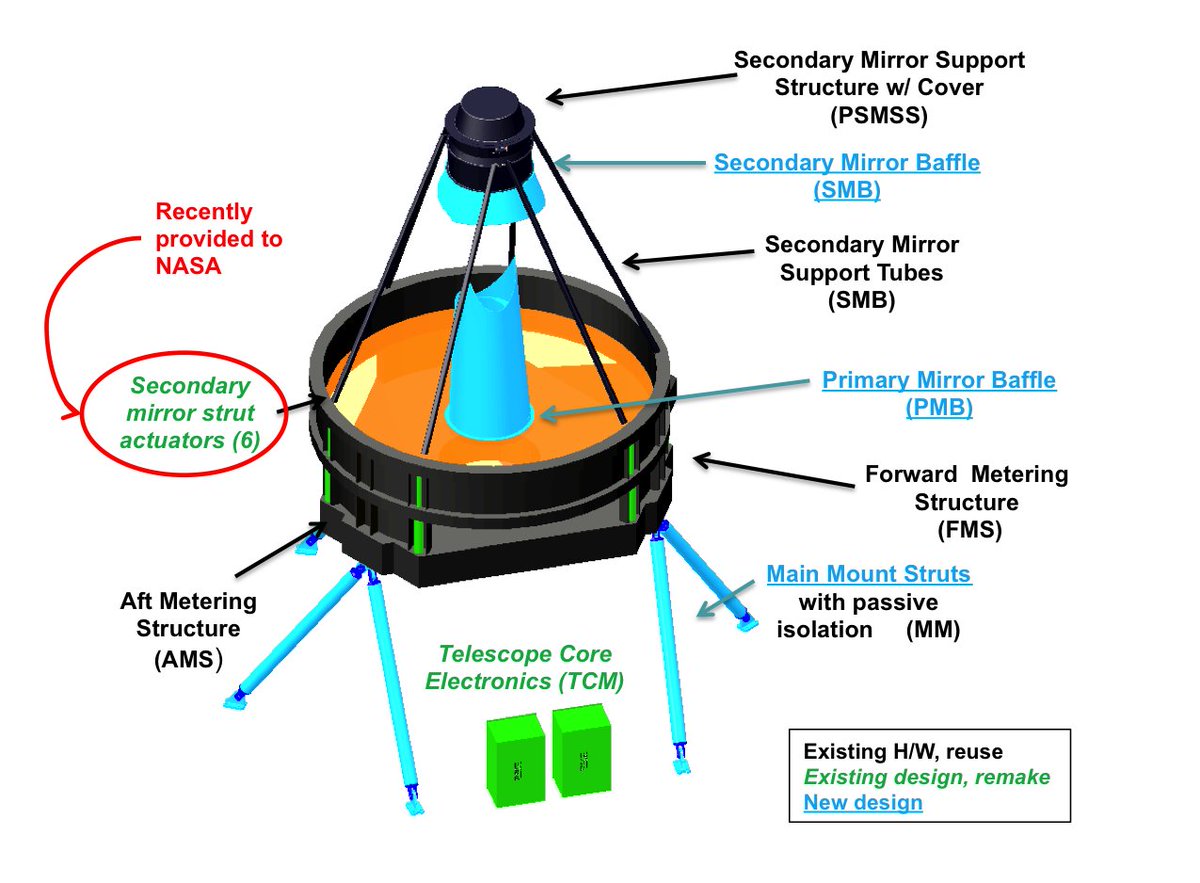Inspired by @mattkenworthy 's great optics gifs: an animation comparing a circular telescope to the real structure of the @NASARoman telescope. Left shows the telescope, right shows the point spread function (the image that interference of light makes when you look at a star).
What you're seeing are the additional effects of the six struts that hold the telescope's secondary mirror.
The complex pattern is caused by constructive and destructive interference of light waves that hit the telescope, the struts, etc. That makes seeing an extrasolar planet with a telescope really hard.
However! Clever people found ways to change that interference. If you block even more of the telescope but in the right pattern, you can increase destructive interference in some areas and cancel out starlight and see a planet.
These "shaped pupils" were invented in the 80s (or before) but developed by Jeremy Kasdin, @DavidSpergel , Rob Vanderbei, and others at Princeton in the 2000s.
AJ Riggs came up with one for Roman - https://ui.adsabs.harvard.edu/abs/2014SPIE.9143E..25R/abstract . If you slide this mask in, it changes the interference and makes a dark region in the image - and lets you see a faint previously-invisible planet!
The real @NASARoman coronagraph is more complicated than this but the basic principal is shaping where interference happens. See if you can spot the planet in this version!

 Read on Twitter
Read on Twitter


